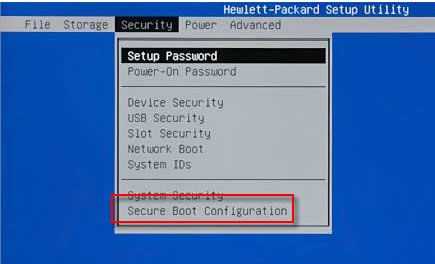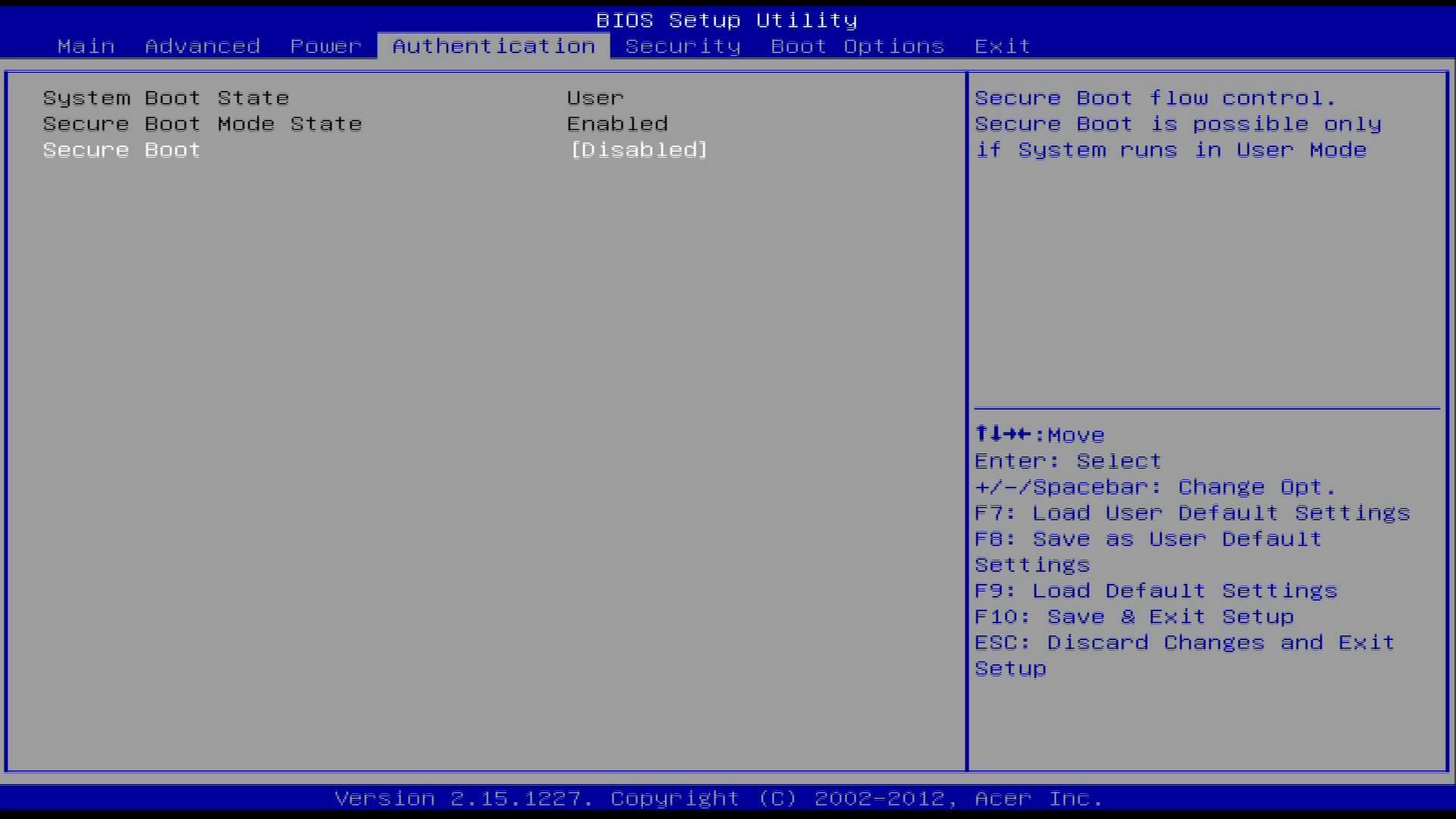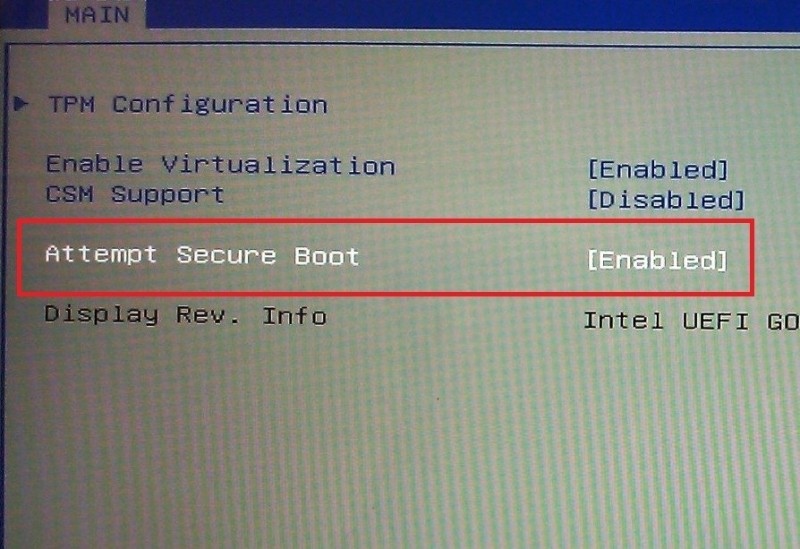

- #How do i disable secure boot windows 10 from bios how to
- #How do i disable secure boot windows 10 from bios password
- #How do i disable secure boot windows 10 from bios Pc
#How do i disable secure boot windows 10 from bios how to
In this guide, you learned how to get into BIOS in Windows 10, so you can have more control over your device. HP: ESC (Escape) to enter startup menu, then F10 or F12. The table below shows the hotkeys for entering BIOS in different brands of computers. This is typically the F2 key on many devices, but there are a few exceptions. Some computer manufacturers give users several keys or key combinations to press while booting so they can enter BIOS.

How to Get into BIOS in Windows 10 Through Hotkeys If you don’t find UEFI Firmware Settings, using hotkeys to enter BIOS will come to the rescue. Step 7: Select “UEFI Firmware Settings” to finally enter your computer BIOS.
#How do i disable secure boot windows 10 from bios Pc
Step 5: After your PC reboots, you'll see a blue background menu containing options like “Continue”, “Troubleshoot”, and “Turn off your PC”. This will allow you to reboot your computer for restoration and some configurations. Step 4: Under “Advanced startup”, Click on “Restart now”. Step 1: Click on Start and select Settings to open up the Settings app. How to Get into BIOS in Windows 10 Through Settings So, in this article, I’m going to show you two ways you can get into BIOS in Windows 10.
#How do i disable secure boot windows 10 from bios password
If you can access BIOS on your PC, you can do various things such as change hard drive settings, create a password for BIOS to make your computer more secure, change the boot order, and more. Otherwise, an error message such as the BSOD (blue screen of death) or several others will be displayed. Once everything has been certified OK during startup, your computer will boot successfully. It is embedded into computers as a motherboard chip and is primarily responsible for booting the computer system.Īpart from booting up your computer, BIOS is responsible for a lot of other functionality behind the scenes – like managing data flow between an operating system and attached hardware devices such as printers, mouse, keyboard hard disk, and scanners.

Go to Boot section, set "Boot Mode" to UEFI.If the option is not there look under Authentication section-> Set "Secure Boot" to Disabled.Go to Boot section, set "Secure Boot" to Disabled.Go to "Advanced"-> "Settings"-> "Windows OS Configuration"->Secure Boot-> set "Secure Boot" to Enabled.Īcer PCs and notebooks Disable Secure Boot.If you want to enable Secure Boot: "Advanced"-> "Settings"-> "Windows OS Configuration"-> look for "Windows 8/8.1 Feature" or "Windows 10 WHQL Support" and set it to "UEFI".Go to "Advanced"-> "Settings"-> "Windows OS Configuration"->Secure Boot-> set "Secure Boot" to Disabled.Go to Boot and set "Secure Boot" to Enabled.Go to Boot and set "CSM Support" to Disabled.Go to Boot and set "Secure Boot" to Disabled.Gigabyte motherboards Disable Secure Boot Go to Security ->Secure Boot-> Set "Secure Boot" to Enabled.Go to Advanced-> CSM Configuration-> Set "CSM Support" to Disabled.Go to Security ->Secure Boot-> Set "Secure Boot" to Disabled.Go to Boot > Secure Boot, it should show that Secure Boot is enabled.Go to Boot > Secure Boot > Key Management-> "Restore DB Defaults".Go to Boot-> CSM(Compatibility Support Module)-> set "Launch CSM" to Disabled.Go to Boot > Secure Boot, it should show that Secure Boot is disabled.Go to Boot > Secure Boot > Key Management-> Clear Secure Boot keys-> Yes.Go to Security and set "Secure Boot" to Enabled.Go to Boot->CSM(Compatibility Support Module)-> set CSM to Disabled.Go to Security-> set "Secure Boot" to Disabled.Switch to "Advanced Mode" if the BIOS is in "Easy Mode".Reboot system and press Del repeatedly at system start.See "Checking MBR or GPT partition style" of this guide. Precautionary notice: If you haven't had this enabled before, your OS will not boot if your boot disk partition style is not GPT. Look for "Secure Boot" option under under Boot, Security or Authentication menu categories.Go to Troubleshoot > Advanced options > UEFI Firmware Settings and press Restart. After restart, the Advanced Startup menu options will appear.

If that does not work, go in Windows, hold the "Shift" key and select Restart from the Start Menu.Some OEM PC(HP, Dell, Acer, Lenovo, Toshiba etc.) and notebooks use keys like F1, F2, F8, F10 or F12 for entering BIOS.


 0 kommentar(er)
0 kommentar(er)
